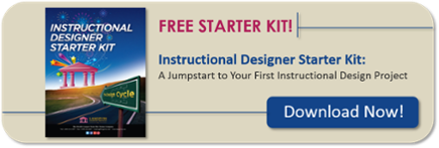Photo by: Melpomenem via Canva
Receiving effective feedback is critical in any training program, whether delivered in a traditional instructor-led class, on the job, in the virtual classroom, or in an asynchronous e-learning module. Learners need to know what they are doing well and where they can make improvements. This article will focus on the additional considerations when designing for asynchronous e-learning.
In e-learning, there are two types of feedback. The first is called direct feedback. With this type, the learner receives immediate feedback built into the e-learning course. It’s often designed to look like the feedback is coming from an outside source, like replicating an instructor giving the feedback directly to the learner. You could also use an avatar to present the feedback as this can help personalize the feedback.
The other type of feedback is called reflective feedback. In this type of feedback, the learner is asked to think about their answer and then compare it to an answer key or checklist built into the e-learning. For example, the learner is asked to create a response. Once the answer is submitted, learners can compare their response to the one built into the e-learning. Once again, an avatar can be used to lead the reflective feedback.
Once you’ve determined the overall type of feedback, here are some additional tips to set you up for success:
Write feedback for both correct and incorrect responses.
Since there’s no instructor to offer additional feedback, it’s important to take the time to write feedback for all possible responses.
Provide positive feedback for all correct answers.
Offer a brief explanation of why the answer was correct. Remember, it doesn’t need to be complicated. Often, all you need to do is restate the key point to the learner. Be sure to provide feedback while the question and selected answer are still visible.
Provide complete and constructive feedback for all incorrect answers.
Once again, offer a brief explanation of why the answer was incorrect. You can also provide a link to a more detailed explanation or link back to where the correct answer can be found in the course. This ensures the learner won’t make the same mistake again. We’re not going to criticize learners for an incorrect response. This can demotivate learners and they may not complete the module. Instead of saying, “That was wrong,” use a more neutral term such as “incorrect.” In addition, avoid vague terms such as “almost” or “close.”
Tie the feedback to the course objectives.
Let the learners know how their improved skills will benefit them. For example, if the course is designed to develop communication skills, emphasize how their new skills will lead to enhanced employee engagement and satisfaction in their jobs.
With these tips, you’ll create an e-learning experience that is informative and motivational for your learners. What do you consider when writing feedback in your e-learning courses?
Additional Resource: Mastering Effective e-Learning Feedback [Video]
Techniques for providing tangible feedback to learners is just one item covered in our Instructional Design for e-Learning workshop. You’ll also learn how to design performance-based tests, combine media and tools, write audio narration, and more.


